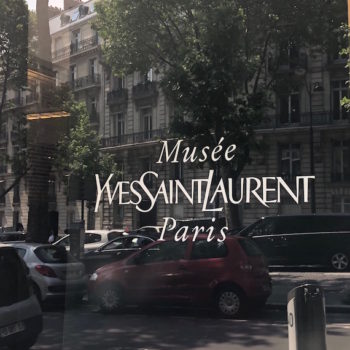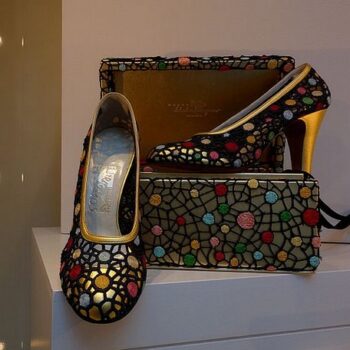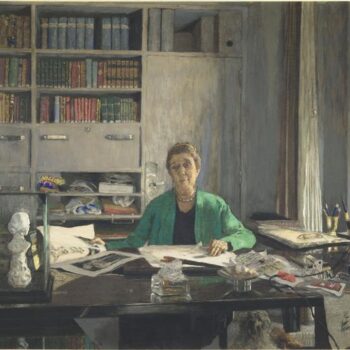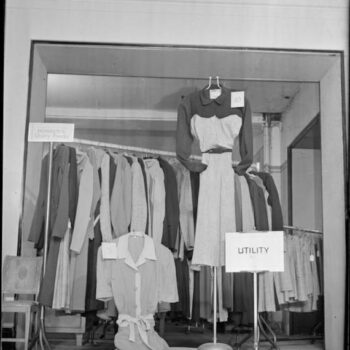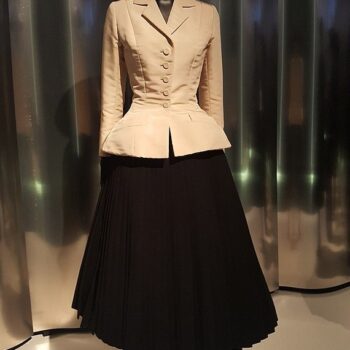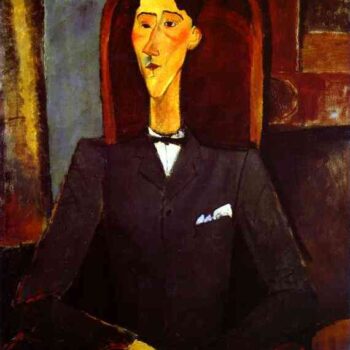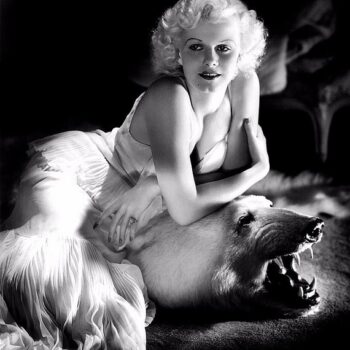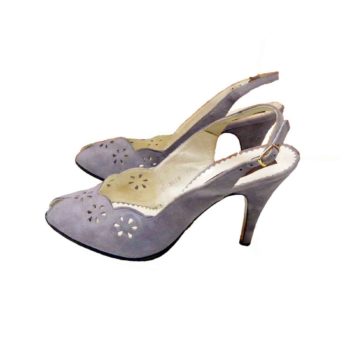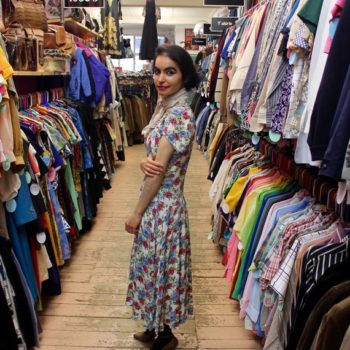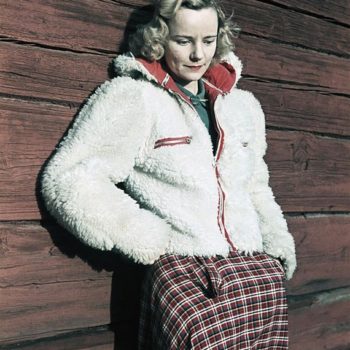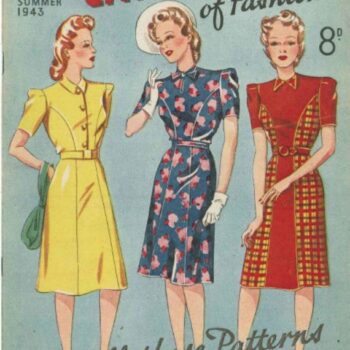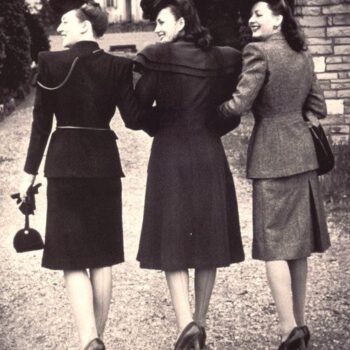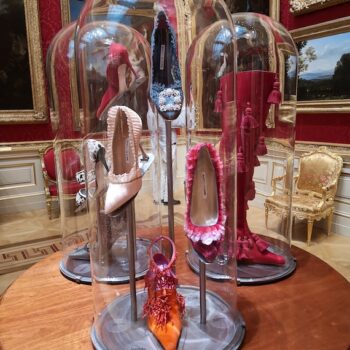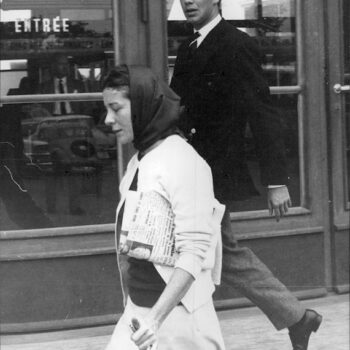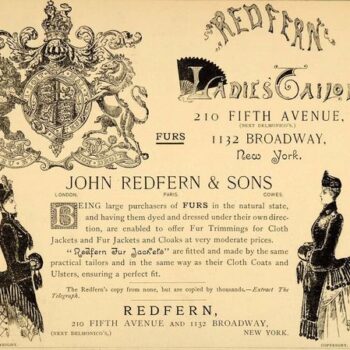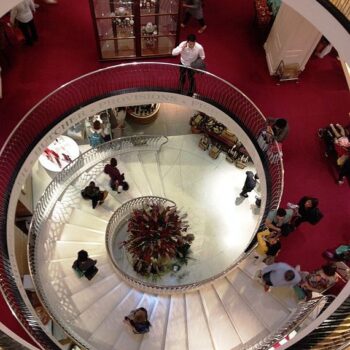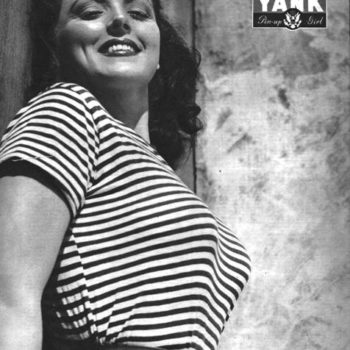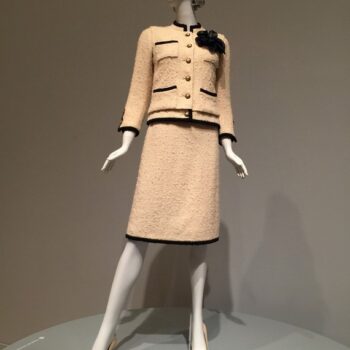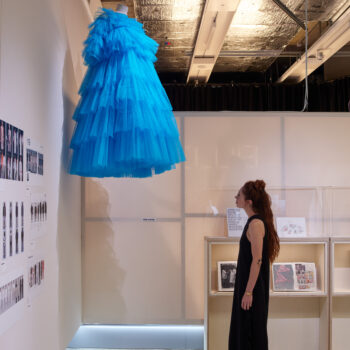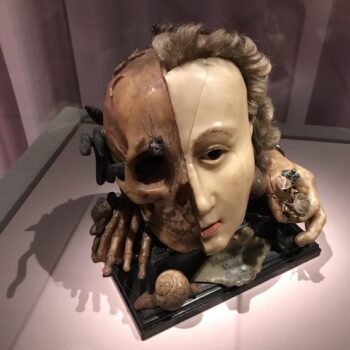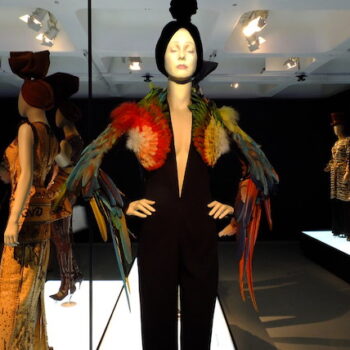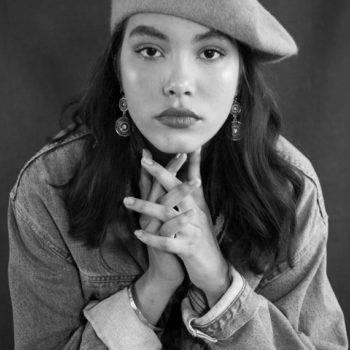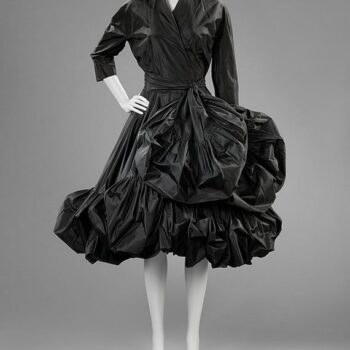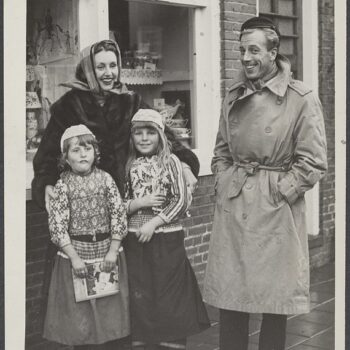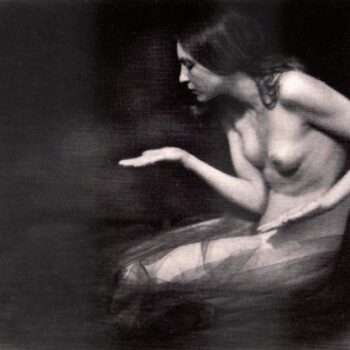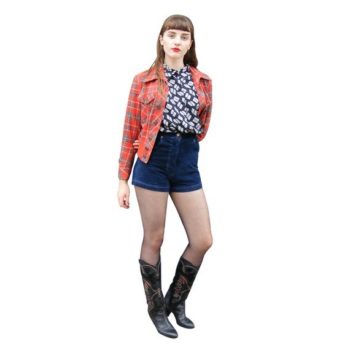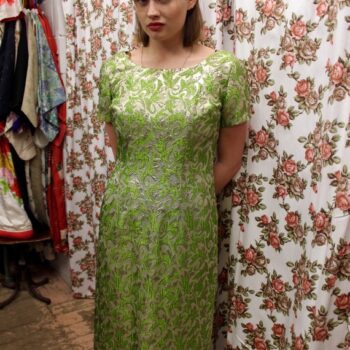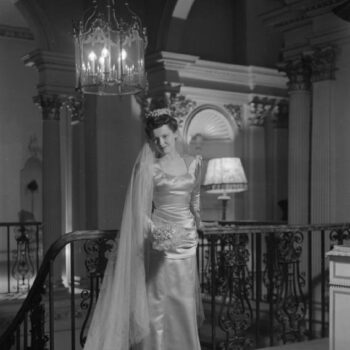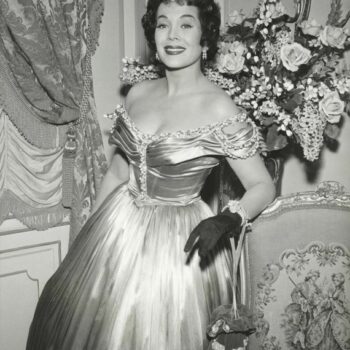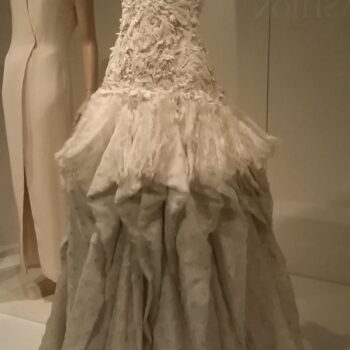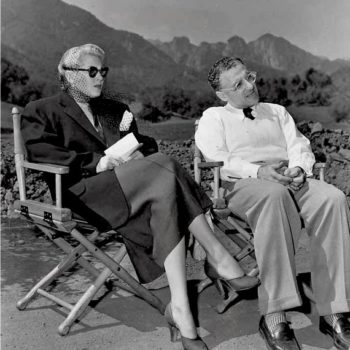Yves Saint Laurent ’s Scandalous Collection
July 26, 2017When I look at the refined gold packaging of my YSL Touche Eclat with its distinctively entwined logo, I would never for one minute think that the man behind the brand Yves Saint Laurent, could have produced a collection that was labelled “pornographic” and “a tour de force of bad taste”.
The amount of shock and disgust displayed towards Yves Saint Laurent s SS 1971 collection would have made any young designer looking for headline inches delighted today – but this was 45 years ago, when couture was for rich women who wanted to be perfectly dressed, not for headline grabbing publicity stunts. Was Yves Saint Laurent the granddaddy of fashion’s enfant terribles?
Yves Saint Laurent ’s most famous image is, perhaps, of the elegant Le Smoking evening tux that he invented for women. A menswear staple, he created an alluring version to fit a woman as an alternative to the evening gown. Or perhaps you think of his boxy “Mondrian” shift dress, an iconic symbol of the 1960s? Some link him with safari suits, and others with a very colourful “Russian” look with knee high boots, orange satin harem pants, and turbans. It’s clear that he was a designer with a lot of versatility.
Yves Saint Laurent shocked the fashion press
His “Occupation” collection of 1971, with its short fur “chubby” jackets, platform heels, and pleated chiffon dresses is also well known for its influence on the 1970s vintage craze. But it’s seldom mentioned how outright disgusted the fashion press were with it. In the 1970s the fashion press were conservative and polite, not opinionated – in fact they generally just described each outfit as it came down the catwalk. They didn’t tell you what they thought, or if they themselves would wear it. And of course, as they sat in the salon watching they behaved perfectly, quietly taking notes and making sketches.
But for this collection, the press booed, hissed, and stopped looking to ostentatiously read their newspapers or write up their notes from other shows. Some actually walked out. Others, like Eugenia Sheppard for the International Herald Tribune, sat through it just to write reports like this: “What a relief, at last, to write that a fashion collection is frankly, definitely and completely hideous.” she began. As for the accessories to go with the collection: “Vivier’s shoes are positively repellant, and I can only hope that he did them under pressure.” she concluded: “Saint Laurent’s collection is the suicidal gesture of all time.”
A pornographic wedding dress
What was it that upset her so very much? Here is his final outfit, the wedding dress, which had a print that was “Slightly pornographic and not to be reported in a family newspaper.” Yet it was also described as “elegantly and beautifully pin-pleated all over. The colours are terracotta and clay.” It wasn’t, actually, this that upset the writer.
Yves Saint Laurent – 1940s inspiration
It was his inspiration. Yves Saint Laurent had called the collection “Occupation”; others called it “Hitler style”. It was based on (some said not based on but recreating) the fashions of war time France. Those fashions were controversial at the time – created under duress when France was occupied by Germany and French women decided to go with rather impractical clothes simply to cock a snook at their German captors – towering platform heels and extravagant hats were some of the looks, while some couture houses stayed open, even making clothes for the enemy’s wives.
Critics suggested that in this time of scarcity women’s energy and resources were better spent elsewhere than flippant fashion, and even that they were dressing themselves up for German soldiers. Another criticism was that couturiers were extremely unpatriotic in their determination to stay open and dress whatever clients they could, although the fashion houses argued that they were employing hundreds of skilled workers and saving them from working in dangerous armament factories.
But these fashions weren’t subtle and weren’t remembered fondly by many. Most who had been though the war simply wanted to forget the whole period, because after all it was a fairly horrific time, and they were shocked to see it dug up and flaunted with fond nostalgia.
Malicious?
“A travesty of the nineteen forties designed by a man who must see that sad period through malicious lenses. He has picked out every fashion feature of the time and then distorted it… or, where there is not distortion, he has wilfully featured the aspects that were most unhappy. And underlined that.
Yves saint laurent makeup
His model girls were made up with rouged cheeks, dark lips, heavy eye shadow; their hair was a mass of curls – blonde, or brazen red. They were young girls with makeup that made them look old, raddled, defiant.If Toulouse Lautrec had lived in the Paris of the Occupation, these are the girls he would have painted.” wrote Alison Adburgham in The Guardian.
Others wrote: “This fashion was already horrendous in its time. Today it can be only of interest to fans of the grotesque Hitler style. It is therefore hideous. It is therefore shameful.”
“One mannequin in bright rouged cheeks and lips looked like Lili Marlene waiting under a lamppost near a red light district.”
“Evoking of soldier chasing girls in war time France”
or simply “Trollopy”.
Yves Saint Laurent – Looking Back
Why did Laurent do it? Well, it’s never been unusual for fashion designers to look to the past for inspiration. In Victorian times, Charles Frederick Worth looked to the 18th century for his designs – Balenciaga chose Victorian times and added bustles to his skirts, as did Dior when he debuted his hourglass New Look in the 1950s. But generally these inspirations were so far away as to seem fairytale.
This was a recycling of fashions only 25 or 30 years old – a bit like today’s vogue for the 1990s. Yves Saint Laurent was a child during the war years – too young to remember the era as an adult himself. Did he have a thing for his mother, or his grandmother perhaps? wondered the press. Or was it the never ending string of 1940s films being shown on French TV that shaped his vision?
Pamola Picasso’s contribution
Pamola Picasso claims that it was her own look which provided the impetus. She dressed in outfits from flea markets and in clothes given to her by her mother’s friends, even finding the bright red shades of lipstick that she craved on second hand stalls because they weren’t produced any more. “I was genuinely amazed that my style could make such a powerful impression on Yves Saint Laurent, especially because I wasn’t really thinking in terms of fashion.” She commented.
“I was crazy about the glamorous women that [1940s films] depicted; they appealed to me a lot more than the androgynous stick figures of the 1970s. The exaggerated shoulders, striking cuts, and nipped-in waists – I had an easier time picturing myself in a wardrobe based on 1940s styles than those of my own era.” She had met Yves Saint Laurent in 1970 as a 21-year-old, and was invited to see his winter collection of that year and the one after it, this “Occupation” collection. “I was amazed to watch those shows and share the feeling that I was already wearing the clothes that caught the spirit of the collections.”
Yves Saint Laurent – The Designer’s Defence
Yves Saint Laurent himself said that he designed the collection as a tribute to youth. “Convention bores me… I need to make a clean break.” he also remarked. But far from being happy with the scandal he’d created, he was himself offended, and he banned Eugenia Sheppard, the writer of the scathing review for International Herald Tribune, from future shows (although he later relented and they made up). He accused of being unable to handle a “fresh intellectual initiative”.
“For years the eye was used to a boyish girl without breasts, waists or hips. I never thought the appearance of a true woman would provoke such a scandal,” he complained to one newspaper.
“I can’t hide my disappointment, because I didn’t expect that in a profession that is open to all I would encounter so many narrow minded individuals. Generally speaking, I think I’ll continue in the spirit of my collection because I am in the right.”
In spite of his bullish attitude, the buyers tended to agree with the press and the show didn’t actually sell all that well, with about half the orders of his last one. Many of his regulars, like Catherine Deneuve, looked elsewhere.
But Yves Saint Laurent had the last laugh, as the season afterwards many more 1940s references were made by other designers and this amped up, red-lipped version of glamour has become synonymous with the1970s.



